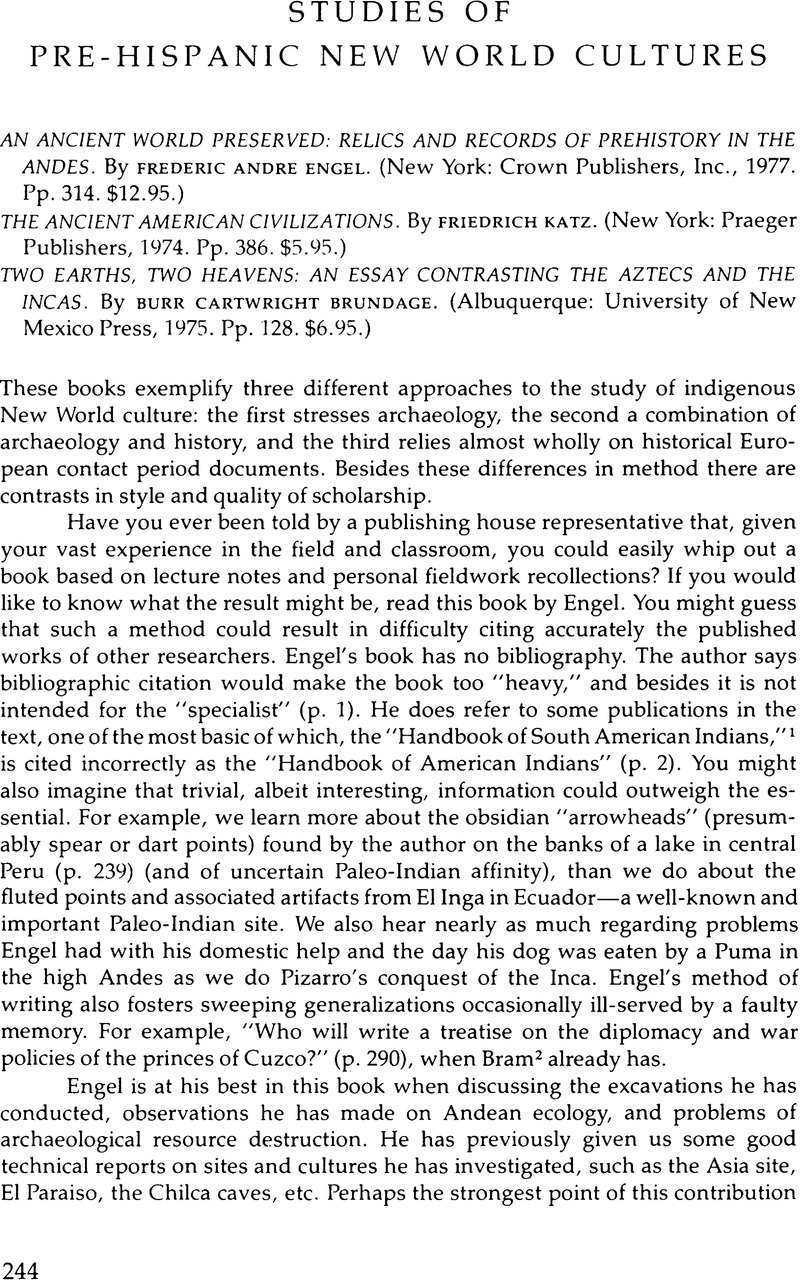No CrossRef data available.
Article contents
Studies of Pre-Hispanic New World Cultures
Review products
Published online by Cambridge University Press: 24 October 2022
Abstract

- Type
- Books in Review
- Information
- Copyright
- Copyright © 1979 by the University of Texas Press
References
Notes
1. Julian H. Steward, “Handbook of South American Indians,” Bulletin 143, Bureau of American Ethnology 1–6 (1946, 1949, 1950).
2. Joseph Bram, “An Analysis of Inca Militarism,” Monographs of the American Ethnological Society 4 (1941; second printing 1966).
3. Emil W. Haury, The Hohokam Desert Farmers and Craftsmen: Excavations at Snaketown, 1964–1965 (Tucson: University of Arizona Press, 1975). See his discussion on page 142.
4. My own analysis of how invasion might be evidenced archaeologically using the Inca example has pointed out numerous pitfalls to simplistic inference. Joseph B. Mountjoy, “Culture Change, Archaeology, and Inference: An Inca Example,” Archaeological Frontiers: Papers on New World High Cultures in Honor of J. Charles Kelley (edited by Robert B. Pickering), University Museum Studies (Southern Illinois University, Carbondale), no. 4 (1976):63–86.
5. In 1966 I participated in a yet unpublished study of the Aztec period terracing near Xochimilco in the southern part of the Valley of Mexico.
6. Alfred W. Crosby, Jr., The Columbian Exchange: Biological and Cultural Consequences of 1492 (New York: Greenwood Press, 1972).
7. Burr C. Brundage, Lords of Cuzco (Norman: University of Oklahoma Press, 1967), A Rain of Darts: The History of the Mexica Aztecs (Austin: University of Texas Press, 1972), Empire of the Inca (Norman: University of Oklahoma Press, 1973).
8. Sally F. Moore, Power and Property in Inca Peru (New York: Columbia University Press, 1958). See her discussion on page 4.


